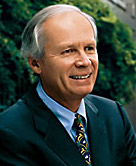
| Big Business |
 |
followthemedia.com - a knowledge base for media professionals |
|
|
AGENDA
|
||
US Newspaper Executives Tell Wall Street This Week Their 2006 Prognosis But the Real Story is That Knight-Ridder Won’t Be Presenting – It’s In the Midst Of Being Forced to Try and Sell Itself -- And That’s the Real Future That Many of Them Don’t Want to Talk About!When the major US publishing companies give their various reports to the 33rd annual UBS Media Week Conference and to the Credit Suisse First Boston media meeting this week the shadow of who is not there will be overwhelming. Knight-Ridder’s prognosis is already known – its three main shareholders want it sold to gain shareholder value, and many of those other newspaper companies – especially those without family protection on their shareholdings – fear they could soon be in the same boat.But while Knight-Ridder won’t be there, CEO Tony Ridder wrote a note to KR staff last week that really basically sums up the entire US newspaper business. It’s a good thriving business, and margins continue to be very high. But for reasons best known to Wall Street, newspaper share prices are down more than 10% this year – perhaps because of fears the future is not so rosy given that circulation and advertising is down, which means it may be difficult in the future to maintain those 20% margins. But a 20% margin business, or a slight dip, is still good money in anyone’s language. Ridder made these points to his staff:
So how come Private Capital Management, KR’s biggest shareholder with 19% of the shares but also a substantial owner in shares of many other newspaper companies has picked on Knight-Ridder?  Tony Ridder“We have a single class of stock, meaning that exceptional voting rights are not reserved for the founding families (Knight Ridder was formed from combining the newspaper holdings of the Knight and Ridder families). In Knight Ridder, all shareholders have the same rights. In most other companies in our industry, including the New York Times, McClatchy, Dow Jones, Belo, Scripps, Media General and the Washington Post, the founding families have exceptional voting rights that prevent this kind of action if they oppose it.” Knight Ridder has hired two leading Wall Street firms – Goldman Sachs and Morgan Stanley -- to advise it with Morgan giving a second opinion to Goldman. But media analysts for both companies don’t have too many good things to say about the newspaper industry – that should make for an interesting sales pitch -- and Morgan Stanley probably has put the fear of God into KR employees by saying in a recent analyst’s note that KR might be an attractive sales prospect if it reduced its costs by $150 million or more.
Preceding the meetings in New York this week, Reuters held its own media/advertising summit, and the soundings from that were basically that the bad conditions the newspaper industry finds itself in are only going to get worse. “I think the newspaper industry’s long-term outlook is really questionable at best,” said Charles Rutman, chief executive of MPG North America, a unit of France’s Havas advertising holding company. “Money chases the customer. It’s an undeniable fact that the generation growing up today is not dependent on newspapers, magazines or broadcast television,” he said. US newspapers are being attacked from all sides. The young now want their news and information online, and the advertisers are going where the young are. Luckily, the young still accept their local newspaper as the venue for local news and US newspaper Internet sites are now among the most popular US information sites. So now publishers are actively working on plans to combine their Internet and print circulations together to present a rosier picture to advertisers. In 2004 newspapers earned 34% of their revenues from classified advertising. Today there are about 10 million users of Craigslist, clicking on 6.5 million postings on 190 sites in 35 countries, and with the exception of job postings in four cities, it’s all free. That has cost newspapers hundreds of millions of dollars of lost revenues although there are signs that some print classified advertising is beginning to pick up again, particularly in help wanted and real estate. The Tribune Company, however, has set the stage for the New York meetings. It has just announced that its consolidated advertising revenue through November 20 dropped 3.9% from the year before, circulation revenues dropped 5.1%, and its television revenues dropped 8.6%. Those are not the kind of numbers that are going to move the Wall Street analysts to a more positive industry outlook. But one thing in particular is striking about this year’s presentations. The newspaper industry, at least at the corporate investors level, has really discovered the Internet. Many of the companies scheduled to speak have announced their corporate web sites will web cast their presentations.
|
| copyright ©2005 ftm publishing, unless otherwise noted | Contact Us • Sponsor ftm |